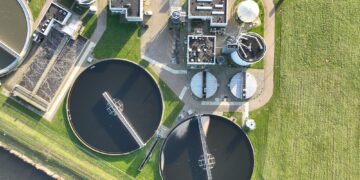Saudi Arabian researchers are exploring new ways to store carbon dioxide underground, focusing on deep saltwater aquifers as a promising method to lower greenhouse gas emissions.
Aquifers, found worldwide, are porous rock layers filled with saltwater unsuitable for consumption or farming. At depths beyond 800 meters, carbon dioxide becomes a dense, supercritical fluid, allowing it to be trapped underground through several mechanisms, such as dissolving in brine, forming solid minerals, or being held beneath impermeable rock layers.
A team from King Fahd University of Petroleum and Minerals has suggested using CO₂ nanobubbles—tiny bubbles less than a micrometer in size—to enhance storage efficiency. These nanobubbles remain suspended in liquid longer than regular bubbles, helping CO₂ spread more evenly through the rocks, dissolve faster in brine, and trigger beneficial chemical reactions. This method could also lower the costs of injecting CO₂ by reducing the need for extensive gas compression.
Despite its promise, this technology is still in the early research phase. Most tests have been limited to laboratory settings with purified water, not the complex salt solutions found in real aquifers. There are also uncertainties about how nanobubbles behave under the intense pressure and heat deep underground, and the high experimental costs without government support pose challenges.
The researchers remain optimistic about the potential of nanobubbles for carbon storage. They urge further collaboration within the scientific community, the development of shared evaluation standards, and the launch of pilot field tests to advance this innovative approach.









